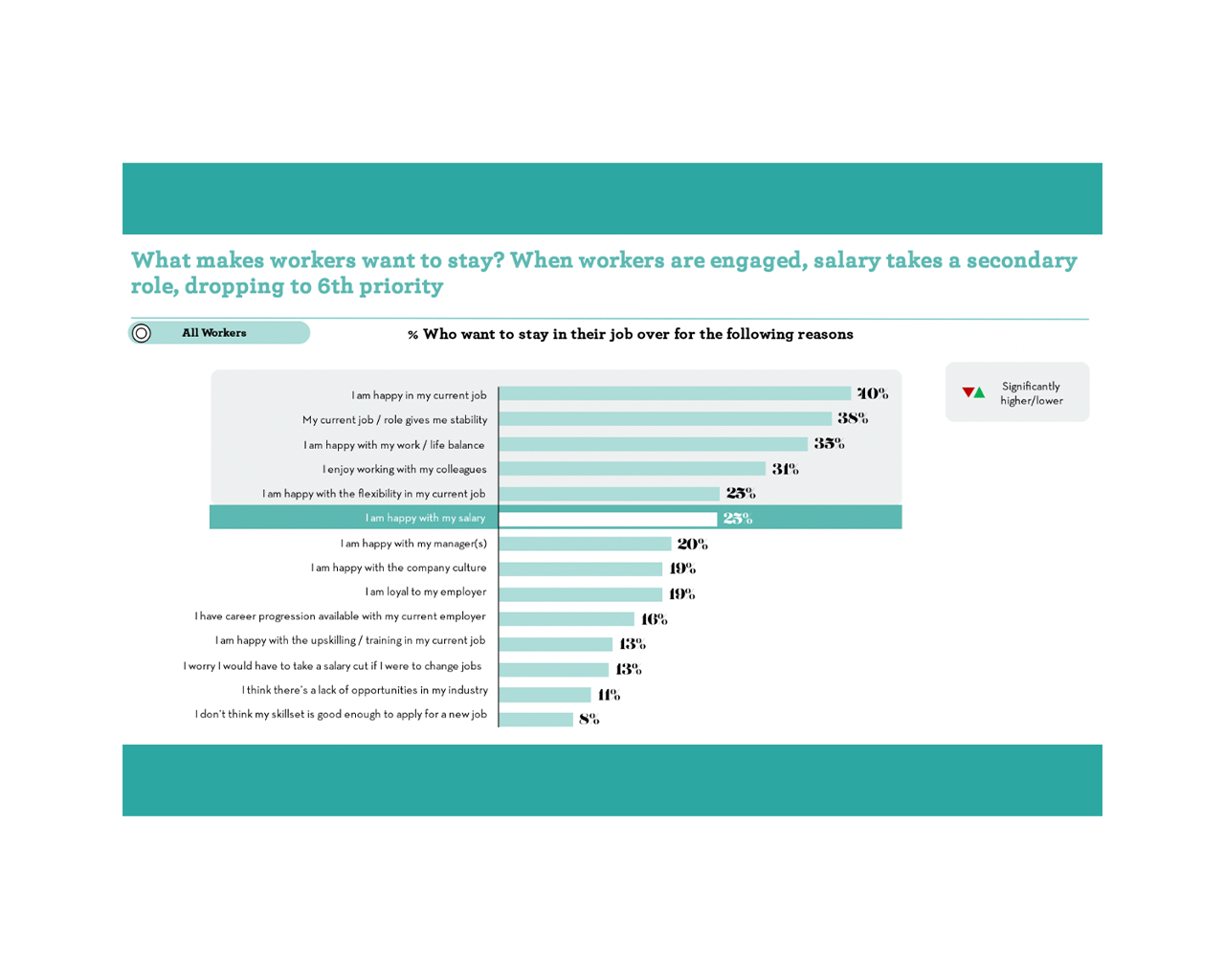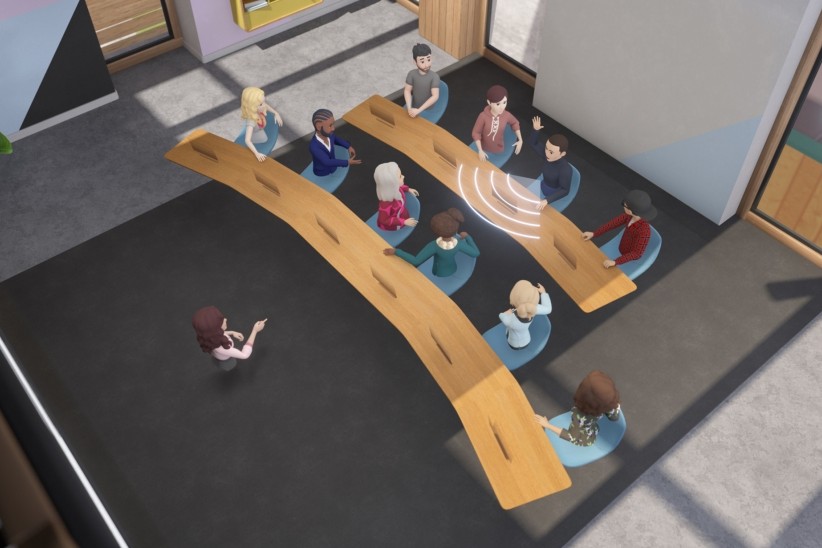This article is authored by Jâlie Cohen, Group SVP Human Resources, The Adecco Group Americas
In today’s workforce, companies are challenged with attracting, developing and retaining four different generations in the workforce, especially with the war for talent. Although most leaders strive to create inclusive environments, it’s not an easy feat. It’s like having four kids with four different personalities and four needs, and you’re trying to bring them all together while ensuring they all feel valued and seen.
This is a powerful moment where we have the opportunity to leverage the strengths of each generation to cultivate innovation, inclusivity and sustainable outcomes. If we challenge ourselves to be truly open to what we can learn from each other, instead of focusing on what is difficult or challenging, imagine the potential for personal and professional growth!
Too often, we focus on the perceived negatives of future generations or perceived antiquated habits of our more tenured workers instead of focusing on the lessons we can take from each other to strengthen our organizations.
When leaders intentionally and thoughtfully engage with workers, they’re on the path to retaining top talent, improving productivity and becoming an employer of choice.
Here are four ways to integrate multi-generations for a productive, engaged, and optimal workplace.
Recognize their strengths and values
Boldness and optimism epitomize Gen Z — they’re very clear with what they want upfront. They’re not as money-focused with job offers and instead, they evaluate the big picture. Recent research from the Adecco Group’s Global Workforce of the Future Report 2022 shows this generation defines a successful working life as having a good work-life balance, a job that you are passionate about and having flexibility over working hours and schedule. In fact, nearly half of Gen Z work a 4-day week (47%), according to the research, compared with just 32% on average globally. . This generation is not afraid to ask first about an employer’s value proposition or how they take care of employee wellbeing. It is key that their employer's values align with their own. Inclusive cultures are expected, not a nice-to-have for this generation.
Millennials are now our mid-level managers and entering Executive ranks. They are tech savvy and very strong with their inclusive lens. Plus, they’re satisfied — the Adecco Group’s research indicates that 72 percent of millennials are satisfied with their job overall (10 percentage points higher than Gen X and 5 percentage points higher than Baby Boomers). They love to learn and value the social interactions in the workplace.
Gen X has a mix of social skills and technical skills that prepares them well for leadership roles. According to the Global Leadership Forecast, researchers reveal that Gen Xers hold slightly more than 50 percent of all leadership roles. They may not make all of their decisions leveraging technology, but they’re able to effectively combine both hard and soft skills to meet objectives. Plus, they navigate conflict in a productive way. They value quality of life and career equally. The Adecco Group’s research shows that work-life balance, being happy at work (enjoying the day-to-day) and having a good sense of job security are what matters most to Gen X.
Baby Boomers add value in the workforce from experience, resiliency and business savvy — Practicality, communication skills and critical thinking skills are as valuable as ever. According to SHRM, they get personal fulfillment through work. Boomers are proactive in offering to help and mentor to share lessons learned.
Offer mentoring, peer mentoring, reverse mentoring and job shadowing
Leverage Gen X and Baby Boomers by mentoring Millennials and Gen Z. This supports up-and-coming workers as they navigate the early stages of their career. The Global Workforce of the Future Report 2022 shows that younger workers are hungry for career guidance and look towards senior colleagues as the first port of call.
Focus on collaborative solutioning by encouraging peer feedback and reverse mentoring. This opens up the door to allow a safe space, regardless of level, to share ideas and ask for advice. For example, one person maybe a Power BI expert creating dashboards, but they need a few pointers on the best way to tell the story of what the data is saying.
It’s also a great way for mentees to learn about the culture and have someone to bounce ideas. They can turn to someone and say, “Okay, I’m struggling with this one thing. Can I spend 15 minutes bouncing it off you, can we talk it through? What are the pitfalls? What should I look out for?”
Job shadowing is another effective way to bridge the generations so junior workers can learn from more seasoned ones. While this on-the-job training is typically leveraged to on-board employees, it’s not limited to new hires. It can create engagement if someone wants to pursue another position internally by following someone performing the role whether it’s for a few hours, a day or several days.
Mentoring, peer mentoring, reverse mentoring and job shadowing underscore inclusivity as well as communication and clarity. When workers are paired, especially from different departments, they may gain new perspectives about their roles and the organization as a whole. Ultimately, they’re building valuable relationships with colleagues who they can trust.
Set clear career paths and flexible rotations
Along with Gen Z and Millennials’ intuitive technology skills, they’re also fast-paced and focused on efficiency. Many grew up with technology that has allowed them to develop social connections with people they have never met through social media and gaming technologies. They also view the power of entrepreneurship, start ups and alternative paths for careers. Companies have to reimagine the notion of career paths, timing for promotions and rotations if they want to attract and retain this generation. This is tough because they may believe that every year to 18 months they should get promoted or have a title change.
That’s why it’s important to have clearly defined career paths that show flexibility and allow for various ways to progress. Internal mobility is an underused approach to retaining talent and providing career development opportunities. Workers support this approach, with over two thirds agreeing that companies should upskill and develop existing employees for different roles across the organization before hiring external candidates. Unfortunately, however, only a quarter of workers feel their company encourages them to apply for internal job opportunities.
Clear career paths are essential for Gen X, too. A third of Gen Xers who are looking to change jobs in the next 12 months are doing so for better career progression opportunities. Since Gen X is nimble in both communication and technology skills in addition to being self-starting independent workers, companies need to ensure Gen X continues having autonomy. They don’t want to be micromanaged and have ambiguous goals. Companies may want to consider offering rotations, either domestically or internationally (for global employers), so even if it’s a lateral move, workers will gain new skills and experiences.
As for Baby Boomers, in the same Adecco Group surveyjob security is a top three factor for successful working life, so it’s important to set a clear path with reassurance it’s unlikely to lead to a layoff. Since many Boomers want greater support and recognition from bosses, outlining a clear path and objectives can help them feel valued. In addition, this generation is typically loyal to companies, so offering rotations or flexibility for job sharing can help boost retention if they’re interested in retirement, but on a part-time basis.
To keep workers engaged when they’re eager to advance, providing a rotation, global project, job sharing or shadowing are viable solutions. This isn’t a one size fits all approach — companies have different versions that work best for them. Essentially, by giving workers opportunities to upskill and explore new experiences even when a promotion isn’t within sight, it also serves as a retention strategy.
When workers are engaged, they’re more likely to stay with a company. According to Adecco Group’s Global Workforce of the Future 2022 report , salary takes a back seat when it comes to reasons why workers want to remain at a company. Results showed that happiness and job stability are the top reasons followed by a good work-life balance, their colleagues, and good flexibility. Salary actually ranked in sixth place. (For non-desk workers, flexibility ranked after salary.)

Action the feedback
Listening and doing nothing is worse than not listening. I’m passionate about actioning the feedback. It is critical that you close the feedback loop by sharing what you heard and how the company will take action to help improve the culture and drive stronger outcomes. This simple step shows your belief in transparency and that you are truly listening by actioning.
Two-way communication is an impactful way to build a strong corporate culture. In a long-term study, companies that encourage leadership initiatives, transparent communication and actions that appreciate employees, grew revenue by 682 percent. During the same time, 11 years, companies that didn’t have a robust, interactive, approachable culture only grew by 166 percent. Essentially, a thriving culture may lead to more than four times revenue growth compared to a weak culture.
When employees see that you’re taking action by following through, typically there’s an increase in morale, job satisfaction and engagement. Culture and employee engagement are typically synchronous—a Gallup study reveals that highly engaged workplaces had 41 percent lower absentee rates. Additional Gallup data shows a highly engaged workforce scoring 17 percent higher on productivity and business units that ranked highest on employee engagement showed 21 percent higher levels of profitability compared to units in the lowest quartile.
Although culture, engagement, revenue and profitability are important, actioning the feedback is simply the right thing to do.



